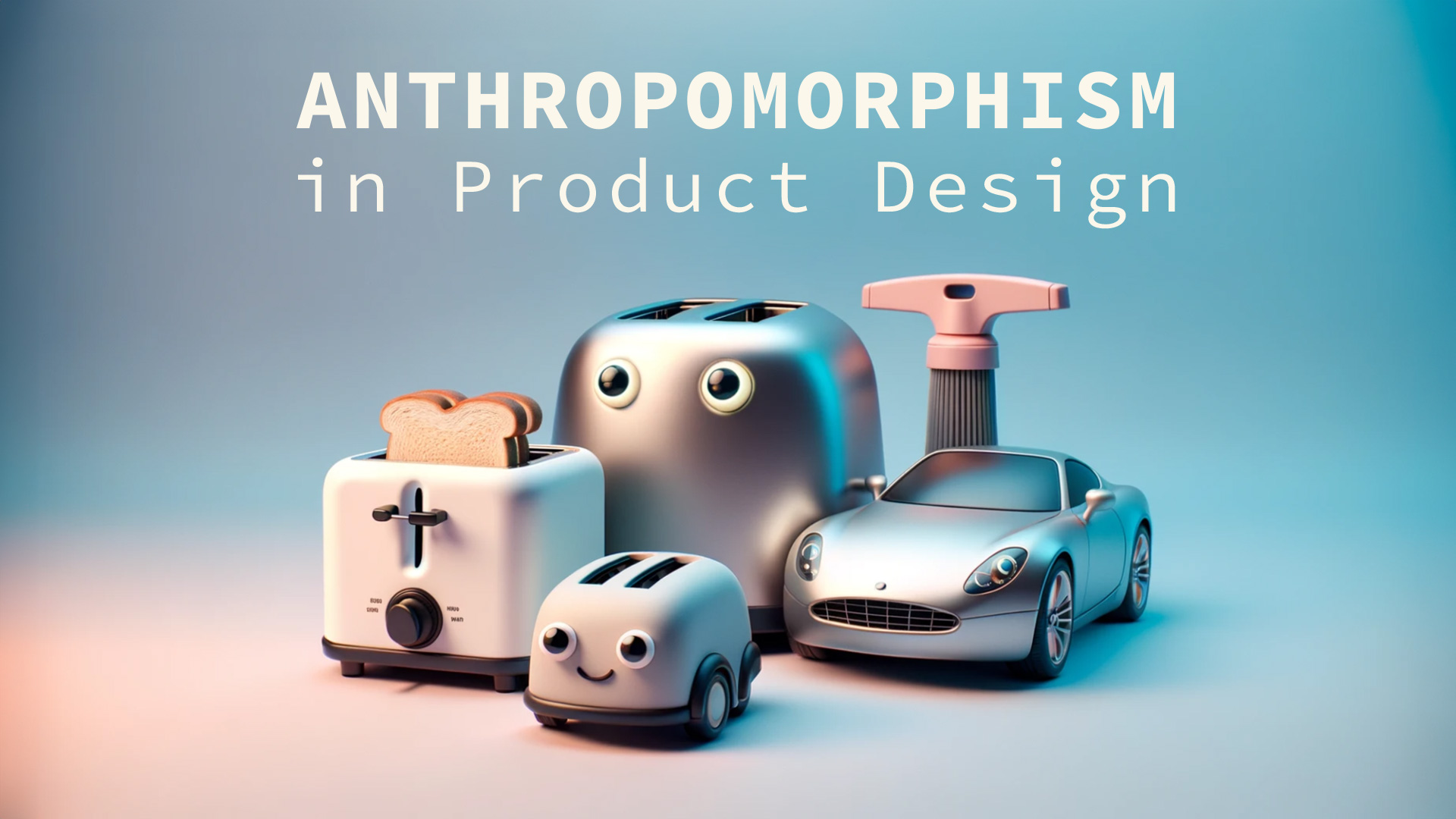ANTHROPOMORPHISM IN PRODUCT DESIGN
When you hear the word 'anthropomorphism,' it might sound like a term that belongs in a dense philosophy book. But it's simpler than it sounds: Anthropomorphism is our tendency to see human traits in non-human entities. In product design, this means giving objects or products human-like qualities. And it's not just a fancy concept; it's a powerful tool in a designer's toolbox. Let's explore why.
WHY IT MATTERS IN DESIGN
- Connection: By nature, humans are social creatures. We connect with things that remind us of ourselves. When a product feels 'human,' we're more likely to form an emotional bond with it. This bond can lead to brand loyalty and affection for a product.
- Intuitiveness: Products with human-like characteristics can be more intuitive. If a product reminds us of a human gesture or emotion, we instantly know how to interact with it.
- Trust: People trust other people. By giving a product human traits, we might trust it more. This is especially crucial in technologies that are new or complex.
REAL-WORLD EXAMPLES
¬ Cars: Ever noticed that the front of many cars look like faces? Two headlights for eyes, a grille for a mouth. Designers do this intentionally because we feel more affectionate and connected to something that reminds us of a friendly face.
¬ Virtual Assistants: Think Siri, Alexa, or even Google Assistant. They don’t just mechanically respond; they have personalities. They tell jokes, have unique voices, and sometimes even 'understand' our feelings. This human touch makes us more comfortable using them.
¬ Software and Apps: Icons or avatars that represent human-like features or personalities. For instance, the old Microsoft Office Assistant, "Clippy," although not always beloved, was an anthropomorphic paperclip designed to offer help.
¬ Branding Mascots: Brands have long used anthropomorphic mascots to connect with their audience. Tony the Tiger, Mr. Peanut, or the Geico Gecko are all non-human entities given human traits, making them memorable and relatable.
¬ Teapots and Kettles: The classic design of a teapot often has a "face" - the spout might look like a long nose, and the handle and lid can give the appearance of ears or a hat.
POSSIBLE PITFALLS
¬ Over-Humanization Leading to Unrealistic Expectations: If a product is given too many human-like characteristics, users might expect it to behave exactly like a human, leading to disappointment when the product doesn't meet these heightened expectations. For instance, if a robot vacuum is designed to exhibit "emotions," users might expect it to understand complex commands or tasks that it's not designed for.
¬ Misinterpretation Across Cultures: Anthropomorphic designs might not resonate the same way across different cultures. What's perceived as friendly or trustworthy in one culture might be perceived as odd or even off-putting in another. This is especially true for designs targeting global audiences.
¬ Over-Reliance Can Diminish Functionality: Striving too hard to incorporate human-like traits can sometimes come at the expense of a product's functionality. If form (the human-like attributes) takes precedence over function, it can lead to a product that looks appealing but doesn't serve its primary purpose effectively. For instance, a thermostat that "smiles" when set to an optimal temperature might be cute, but if it's hard to adjust or read because of this design choice, it can frustrate users.
KEY TAKEAWAYS
- Human-Like Appeal: We're naturally drawn to items that resemble or display human traits.
- Emotional Projections: When objects seem to have human qualities, people are inclined to project human emotions or intentions onto them, leading to a liking for such designs.
- Emotion vs. Analysis: Designs with human-like traits are assessed more through emotions, making them less prone to negative critiques during purchasing decisions. On the other hand, designs without these traits are scrutinized more logically.
- Shape-Driven Perceptions: To evoke femininity or sensuality in design, consider using shapes with curves or hourglass proportions. For a more childlike or innocent feel, opt for rounded shapes. If aiming for a masculine or assertive vibe, angular designs are effective.
- Emotive Design Power: Employing designs that mirror human attributes can be a powerful tool to capture interest and create an emotional bond with consumers.
The goal of design is to create solutions that resonate with the user. Anthropomorphism is just one tool in a designer's toolkit, but when used effectively, it can significantly enhance the user's experience and emotional connection to a product.
CONCLUSION
Anthropomorphism is more than a mere aesthetic choice; it's a bridge connecting us to the products and objects in our daily lives. By weaving human characteristics into design, products become more relatable, evoking trust and enjoyment. However, like any powerful tool, it should be used judiciously. Over-reliance or inappropriate application can lead to pitfalls, from setting unrealistic user expectations to inadvertently compromising functionality. The next time you encounter a toaster that 'smiles' or a vacuum that 'dances,' appreciate the design intent, but also recognize the balance required.
